| Date | Text | |
|---|---|---|
30 Nov 1981

Russell McCormmach |
Russell McCormmach (history of science) Night Thoughts of a Classical Physicist is published by Russell McCormmach. McCormmach uses the novel to present a historiographic point meant to reinforce Thomas Kuhn's conception of a non-linear scientific development. |
|
30 Nov 1981

Poincaré conjecture |
Poincaré conjecture (mathematics) Michael Freedman proves the Poincaré conjecture in dimensions equal to 4. |
|
30 Nov 1981

Gerhard Frey |
Gerhard Frey (mathematics) Gerhard Frey draws attention to the property of the elliptic curve which becomes known as the Frey curve. |
|
30 Nov 1981

Brazilian |
Brazilian (mathematics) Brazilian mathematician Celso Costa gives a mathematical description of Costa's minimal surface, the first embedded minimal surface discovered in more than a century. |
|
30 Nov 1981

Working Formulation |
Working Formulation (medicine) Working Formulation adopted as a standard classification for non-Hodgkin lymphomas. |
|
30 Nov 1981

Konrad Lorenz |
Konrad Lorenz (psychology) The Foundations of Ethology is published by Konrad Lorenz. |
|
30 Nov 1981
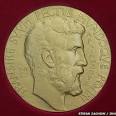
Fields Prize in Mathematics |
Fields Prize in Mathematics (awards) Fields Prize in Mathematics: Alain Connes, William Thurston and Shing-Tung Yau |
|
30 Nov 1981

Turing Award |
Turing Award (awards) Turing Award – Stephen Cook |
|
07 Jan 1982

Commodore 64 |
Commodore 64 (computer science) The Commodore 64 8-bit home computer is launched by Commodore International (released in August); it becomes the all-time best-selling single personal computer model. |
|
17 Jan 1982
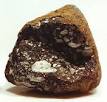
Allan Hills A81005 |
Allan Hills A81005 (astronomy) Allan Hills A81005, the first lunar meteorite found on Earth, is discovered in the Allan Hills at the end of the Transantarctic Mountains by John Schutt and Ian Whillans during the ANSMET meteorite gathering expedition. |
|
30 Jan 1982

computer virus |
computer virus (computer science) First computer virus, the Elk Cloner, written by 15-year-old Rich Skrenta, is found in the wild. It infects Apple II computers via floppy disk. |
|
20 Feb 1982

Derek Jackson |
death Derek Jackson Derek Jackson (b. 1906), British-born spectroscopist and steeplechase rider. |
|
10 Mar 1982

Syzygy |
Syzygy (astronomy) Syzygy: all 9 planets align on the same side of the Sun. |
|
25 Mar 1982

Rufus P. Turner |
death Rufus P. Turner Rufus P. Turner (b. 1907), African American electronic engineer. |
|
09 Apr 1982

Robert Havemann |
death Robert Havemann Robert Havemann (b. 1910), German chemist. |
|
03 May 1982

Henri Tajfel |
death Henri Tajfel Henri Tajfel (b. 1919), Polish-born British social psychologist. |
|
22 May 1982

Jay Laurence Lush |
death Jay Laurence Lush Jay Laurence Lush (b. 1896), American livestock geneticist. |
|
12 Jun 1982

Karl von Frisch |
death Karl von Frisch Karl von Frisch (b. 1886), Austrian-born ethologist and winner of the Nobel Prize in Physiology or Medicine. |
|
20 Jul 1982
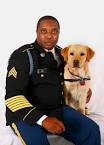
Allen Hill |
Allen Hill (medicine) Allen Hill and colleagues at the University of Oxford develop a glucose biosensor. |
|
29 Jul 1982

Vladimir Kosma Zworykin |
death Vladimir Kosma Zworykin Died 29 Jul 1982 at age 92 (born 30 Jul 1889). Russian-American physicist and electronics engineer who is known as “the Father of Television.” Concurrent with the start of radio broadcasting, Zworykin was developing a system of transmitting sound and pictures. Other inventors were using a motorized, mechanical scanning system with rotating disks capable of a picture about one inch square. It was heavy, bulky and impractical for home use. Zworykin, at Westinghouse, instead developed an electronic scanning television system using his innovations, the iconoscope and kinescope, the forerunners of today's television camera. He also invented the electron microscope. |
|
29 Jul 1982
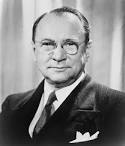
Vladimir K. Zworykin |
death Vladimir K. Zworykin Vladimir K. Zworykin (b. 1889), Russian American pioneer of television technology. |
|
15 Aug 1982

Axel Hugo Teodor Theorell |
death Axel Hugo Teodor Theorell Died 15 Aug 1982 at age 79 (born 6 Jul 1903). Swedish biochemist whose study of enzymes that facilitate oxidation reactions in living cells contributed to the understanding of enzyme action and led to the discovery of the ways in which nutrients are used by organisms in the presence of oxygen to produce usable energy. Theorell won the Nobel Prize for Physiology in 1955 for "for his discoveries concerning the nature and mode of action of oxidation enzymes." |
|
23 Aug 1982

Stanford Moore |
death Stanford Moore Died 23 Aug 1982 at age 68 (born 4 Sep 1913). American biochemist, who shared (with Christian B. Anfinsen and William H. Stein) the 1972 Nobel Prize for Chemistry for his contribution to the understanding of the connection between chemical structure and catalytic activity of the active centre of ribonuclease molecule, an enzyme. Enzymes are large molecules (macromolecules). The way in which an enzyme accelerates a chemical reaction involves an interaction of the reacting substance (the substrate) with only a limited part of the enzyme molecule, its active site. Moore and Stein have carried out investigations which supplement each other and have led to a complete elucidation of the sequence of amino acids in the enzyme ribonuclease. |
|
24 Aug 1982
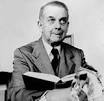
Giorgio Abetti |
death Giorgio Abetti Died 24 Aug 1982 at age 99 (born 5 Oct 1882). Italian astronomer known for his studies of the sun at the University of Padua where was director at the Arcetri Observatory (1921-52), taking over from his father who also held the post (1894-1921). In 1913, Giorgio Abetti took part, as a geodetic and geophysical astronomer, in the De Filippi expedition in Karakorum, Himalaya and Turkestan. He went on expeditions to observe eclipses of the sun, including one to Siberia to observe the total eclipse on 19 Jun 1936 and in 1952 to Sudan. With the advice of George Hale, he built a solar tower at the observatory (opened 1925). He wrote a popular text on the sun, a handbook of astrophysics (1936) and a popular history of astronomy (1963). |
|
29 Aug 1982

Transglobe expedition |
Transglobe expedition In 1982, the 52,000-mile “Transglobe” expedition completed the first circumnavigation of the world's polar axis. Beginning in 1979, British explorer Ranulph Fiennes with Charles Burton had travelled for three years around the Earth via the Poles circling the earth on longitude 0, the Greenwich Meridian. They had reached the North Pole on 11 Apr 1982, and the South Pole sixteen months before that. Their journey across Antarctica took 67 days, despite the advantages of motorised skidoos. The ocean voyage was undertaken in a craft named Benjamin Bowring. The expedition cost an estimated $18 million. |
|
29 Aug 1982
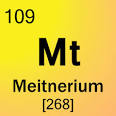
Element 109 |
Element 109 In 1982, an atom of a new element was made. It has been given the proposed name of Meitnerium, symbol Mt. Physicists at the Heavy Ion Research Laboratory, Darmstadt, West Germany made and identified element 109 by bombing a target of Bi-209 with accelerated nuclei of Fe-58. After a week of target bombardment a single fused nucleus was produced. The combined energy of two nuclei had to be sufficiently high so that the repulsive forces between the nuclei could be overcome. The team confirmed the existence of element 109 by four independent measurements. The nucleus started to decay 5 ms after striking the detector. This experiment demonstrated the feasibility of using fusion techniques as a method of making new, heavy nuclei. |
|
01 Sep 1982
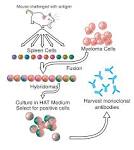
monoclonal antibody |
monoclonal antibody (biology) First report of anti-human monoclonal antibody production. |
|
09 Sep 1982

George Brownlee |
George Brownlee (medicine) George Brownlee and colleagues at the University of Oxford publish their results of cloning human clotting factor IX. |
|
30 Sep 1982
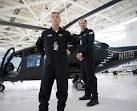
Helicopter circumnavigation flight |
Helicopter circumnavigation flight In 1982, H. Ross Perot and Jay Colburn completed the first circumnavigation of the world in a helicopter, the Spirit of Texas. Their journey began 29 days, 3 hours, and 8 minutes earlier on September 1. For their trip around the world, which began and ended in Fort Worth, Texas, Perot and Coburn flew a Long Ranger with full navigation equipment, survival gear, and emergency items. Pop-out floats were added, and a 151-gallon auxiliary fuel tank in place of the rear seat was used to enable the Spirit of Texas to fly eight hours without refueling. An Allison 250-C28B turbine engine performed flawlessly for 246.5 hours of flight, flying more than 10 hours a day, over open ocean, barren desert, and tropical rain forest with an average ground speed of 117 mph. |
|
14 Oct 1982
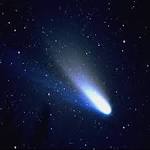
Halley's Comet |
Halley's Comet (astronomy) Halley's Comet: First spotted in the sky after 70 year return. |
|
01 Nov 1982

Helen House |
Helen House (medicine) Helen House, the world’s first children’s hospice, is set up by Sister Frances Dominica in Oxford, England. |
|
16 Nov 1982

Pavel Sergeevich Aleksandrov |
death Pavel Sergeevich Aleksandrov Died 16 Nov 1982 at age 86 (born 25 Apr 1896). Soviet mathematician who made important contributions to the field of topology (the study of related physical or abstract elements that remain unchanged under certain distortions) and one of the founders of the theory of compact and bicompact spaces. Aleksandrov introduced many of the basic concepts of topology, such as the notion that an arbitrarily general topological space can be approximated to an arbitrary degree of accuracy by simple geometric figures such as polyhedrons. Giving support to international cooperation, he supervised the publication of an English-Russian dictionary of mathematical terminology (1962). |
|
30 Nov 1982

Léon Croizat |
death Léon Croizat Died 30 Nov 1982 at age 88 (born 16 Jul 1894). Italian biogeographer and botanist who wrote a critique of Darwinism. Rather than addressing the problem of form, as considered by other ctitics, Croizat took a unique and fascinating position. He believed in the problem of space, an aspect of biogeography, because it is through space and in time that the forms of organisms change. Croizat acknowledges Darwin knew the importance of the spatial aspect, but failed to expand beyond a passing mention. Croizat developed a track method of investigation to study the geographic distributions of organisms and map them into what he called “dispersal patterns.” |
|
02 Dec 1982

University of Utah |
University of Utah (medicine) At the University of Utah, 61-year-old retired dentist Barney Clark becomes the first person to receive a permanent artificial heart; he lives for 112 days with the device. |
|
27 Dec 1982
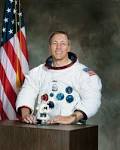
Jack Swigert |
death Jack Swigert Jack Swigert (b. 1931), American astronaut. |